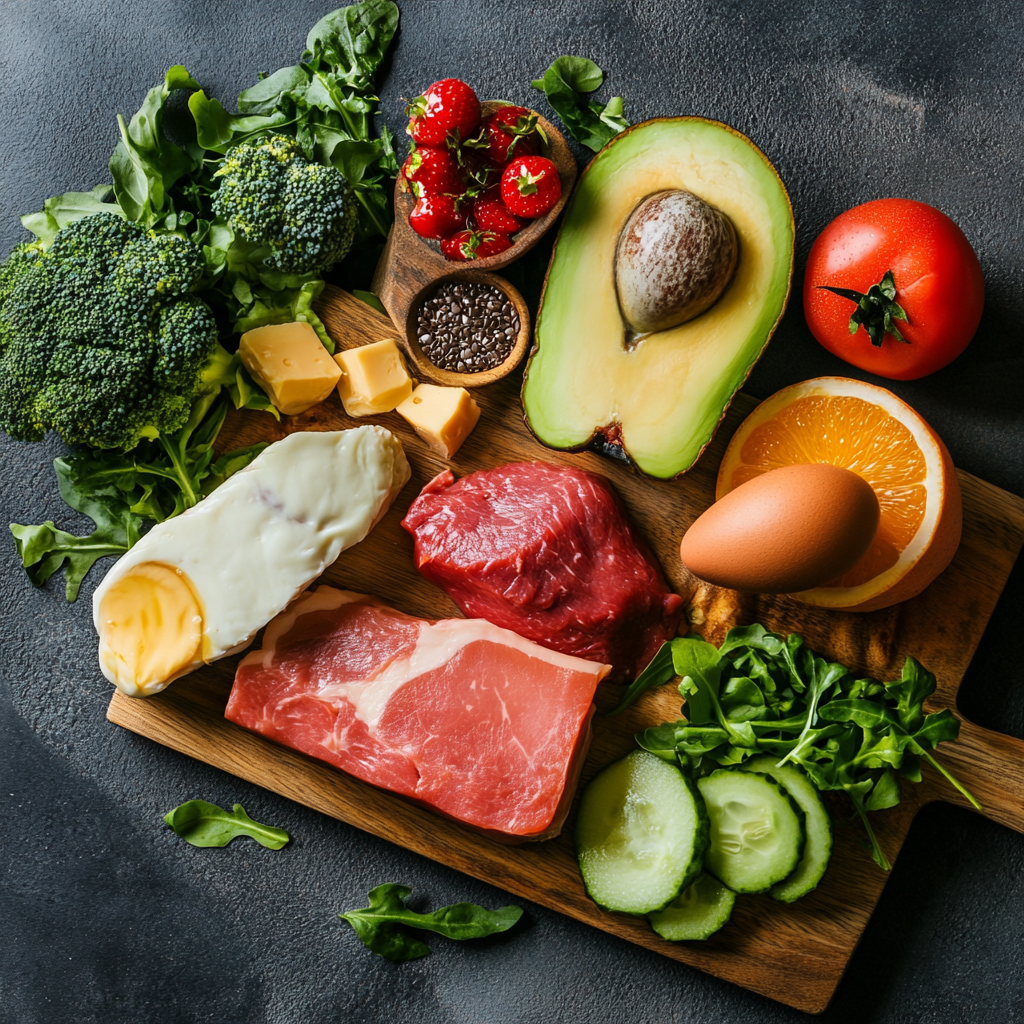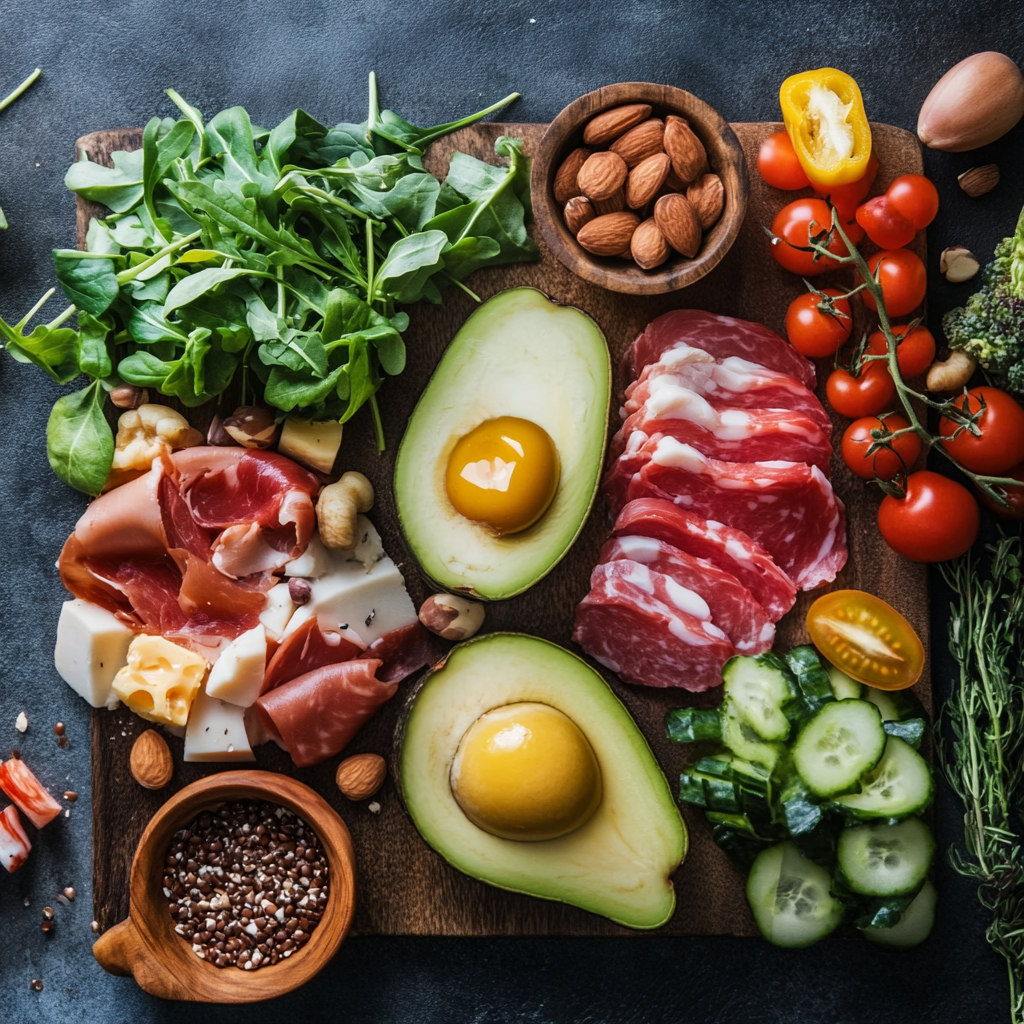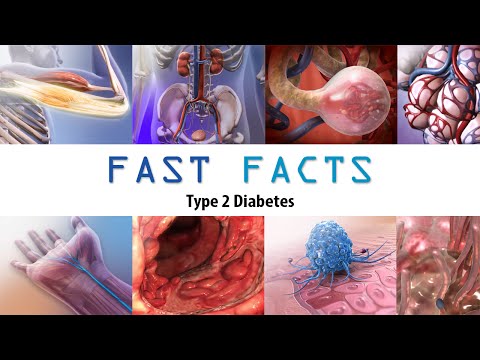Embarking on a new diet can feel overwhelming, but the ketogenic diet, often called “keto” for short, has gained traction for its potential to help with weight loss and improve overall health. In this guide, we will explore everything you need to know about keto, from its foundation to practical tips for getting started. Think of this as your friendly mentor walking you through the keto lifestyle! Understanding the Ketogenic Diet
At its core, the ketogenic diet is a high-fat, moderate-protein, and very low-carbohydrate eating plan. By drastically reducing carbohydrate intake and replacing it with fat, your body enters a metabolic state known as ketosis. In ketosis, your body becomes incredibly efficient at burning fat for energy instead of relying on carbohydrates. This can lead to weight loss, reduced hunger, and improved mental clarity.
The Science Behind Keto

When you consume carbohydrates, your body converts them into glucose, which is used as the primary energy source. However, high carb consumption can lead to spikes in blood sugar levels and increased fat storage. By reducing your carb intake to about 5-10% of your total daily calories, your body is forced to turn to fat for energy, producing ketones in the liver that serve as an alternative fuel source. This metabolic state is known as ketosis, and it can lead to several potential benefits beyond just weight loss. Many individuals on a low-carb or ketogenic diet report feeling more energized and focused, likely due to the steady supply of energy from fat and ketones, rather than the spikes and crashes associated with high-carb diets.
In addition to energy stabilization, a low-carb intake can help regulate insulin levels. Insulin is the hormone responsible for transporting glucose into cells, and it also plays a role in fat storage. By minimizing carbohydrate consumption, you can help keep insulin levels lower, which may promote fat burning and reduce hunger cravings.
Furthermore, a ketogenic diet has been studied for its potential therapeutic benefits. Research suggests that it can be effective in managing conditions such as epilepsy, metabolic syndrome, type 2 diabetes, and even some neurodegenerative diseases. The anti-inflammatory properties of ketones and the reduction of glucose fluctuations appear to be beneficial in these contexts.
Foods to Include and Avoid
When considering fat loss strategies, the Atkins diet and the ketogenic diet emerge as popular options. A low-carbohydrate diet encourages the consumption of foods you can eat, such as healthy fats, while restricting sugars and grains. Research, including a systematic review and meta-analysis, highlights the benefits of the ketogenic diet in promoting long-term weight loss and improving metabolic health.
However, caution is warranted as certain adverse effects may arise from a strict high fat diet. Individuals should be aware of the importance of following the diet’s guidelines carefully, particularly in limiting carbohydrate intake to below 50 grams per day. Contrary to a typical low fat diet, embracing a low-carbohydrate ketogenic diet can offer substantial health benefits, provided it is done thoughtfully.
Comparatively, the Mediterranean diet offers a balanced approach that may also support fat loss while promoting overall well-being. Ultimately, it’s essential to evaluate the effects of a ketogenic diet on individual health and lifestyle before committing to any particular carb diet regimen.
Foods to Include:
– Healthy Fats: Avocado, olive oil, coconut oil, butter, and nuts.
– Proteins: Meat, fish, eggs, and high-fat dairy products.
– Low-Carbohydrate Vegetables: Leafy greens, broccoli, cauliflower, zucchini, and bell peppers.
Foods to Avoid:
– High-Carbohydrate Foods: Bread, pasta, rice, grains, sugar, and starchy vegetables (potatoes, corn).
– Processed Foods: Snack foods, baked goods, and anything with added sugars.
– Certain Fruits: Bananas, apples, and oranges are generally high in sugar and should be limited.
Transitioning to Keto
Transitioning to a ketogenic lifestyle can come with its challenges, especially during the first week or two. This period is often referred to as the “keto flu,” where you may experience symptoms such as fatigue, headache, irritability, and cravings as your body adapts to the new energy source. Here are some tips to ease the transition:
1. Stay Hydrated: Drink plenty of water to help alleviate symptoms and keep your body functioning properly.
2. Electrolyte Balance: Increase your intake of electrolytes such as sodium, potassium, and magnesium by consuming foods like leafy greens, nuts, and bone broth.
3. Gradual Reduction of Carbs: Rather than cutting carbs out completely all at once, consider gradually decreasing your intake over a few days to make the transition easier.
Meal Planning and Prep
One of the keys to success on a ketogenic diet is meal planning and preparation. Here are some strategies that will help you stay on track:
– Plan Your Meals: Create a weekly menu that includes balanced meals focusing on the right macronutrient ratios.
– Batch Cooking: Prepare larger portions of keto meals to save time and reduce the temptation to stray from your diet on busy days.
– Snack Smart: Keep keto-friendly snacks handy, like nuts, cheese, or high-fat yogurt, to help curb cravings and
What is the Keto Diet?

At its core, the ketogenic diet is a high-fat, low-carbohydrate eating plan aimed at encouraging your body to enter a state called ketosis. In ketosis, your body utilizes fat as its primary source of fuel instead of carbohydrates, leading to weight loss and various health benefits. To achieve and maintain ketosis, the ketogenic diet typically involves reducing carbohydrate intake to about 20 to 50 grams per day, while increasing the consumption of healthy fats. This shift prompts the liver to convert fats into ketones, which serve as an alternative energy source for the brain and body.
In addition to weight loss, many proponents of the ketogenic diet report enhanced mental clarity, improved energy levels, and reduced hunger cravings. Some studies suggest that it may also aid in managing certain medical conditions, such as epilepsy, type 2 diabetes, and even some neurological disorders.
However, transitioning to a ketogenic diet can come with challenges. Initially, some individuals may experience what is often referred to as the “keto flu,” a temporary set of symptoms that can include fatigue, headache, irritability, and flu-like symptoms as the body adapts to burning fat for fuel. Staying hydrated and maintaining electrolyte levels can help mitigate these symptoms.
A Brief History of Keto
The ketogenic diet was originally developed in the 1920s as a treatment for epilepsy. Researchers found that a high-fat diet could help reduce seizures in children. Over time, it evolved, and today, many people use it for weight management, improved mental focus, and overall health improvement.
The ketogenic diet has evolved significantly since its inception as a therapeutic ketogenic diet for treating epilepsy. Today, individuals seeking to lose weight often turn to the standard ketogenic diet, which emphasizes a low carbohydrate diet to shift the body’s main source of energy from carbohydrates to fats. This type of diet not only may offer a compelling alternative to a normal diet but also boasts various health benefits of the ketogenic approach.
To successfully follow the diet, individuals must carefully read food labels and tailor their meals accordingly. A sample keto meal plan typically includes foods high in healthy fats while limiting carbohydrate intake. Research has found that the diet can effectively reduce excess weight, with some participants experiencing a loss of up to 10 kg of body weight in a short period. Furthermore, the effects of the diet on overall health have prompted interest in the diet for obesity and related conditions.
How Does Keto Work? (The Science Behind Ketosis)
The use of the ketogenic diet involves significantly reducing carbohydrate intake to induce a metabolic state known as ketosis. When you eat on the keto diet, your body shifts from burning glucose to burning fat for energy, which can help you lose weight. An overview of the ketogenic diet suggests that the keto diet may lead to effective weight loss without the need for a low-calorie diet.
A ketogenic diet study indicates that the diet is usually followed for 8 weeks to observe significant changes. Starting a ketogenic diet typically means consuming less than 50 grams of carbohydrates daily. This diet involves high-fat content, which promotes fat metabolism, while the keto diet includes ketogenic food to maintain energy levels.
Research shows the ketogenic diet reduces appetite and cravings, potentially aiding in adherence long term. Nonetheless, the safety of the keto diet remains a topic of discussion, particularly when considering the diet as a treatment for various conditions. While the diet works effectively for many, careful monitoring is essential.
Ultimately, both low-carb and ketogenic diets have gained popularity since their introduction, showcasing their efficacy in promoting weight management. However, one must consider the potential impacts and consult with professionals before committing to a high-carbohydrate diet diet long term.
Who is the Keto Diet For?
The keto diet can benefit various individuals, including:
– Those looking to lose weight.
– Individuals with insulin resistance or type 2 diabetes.
– Athletes wanting to improve performance through fat adaptation.
– Anyone interested in improving mental clarity and energy levels.
Benefits of the Keto Diet

The ketogenic diet is usually recognized for its potential to aid weight loss. This diet may help individuals adapt their metabolism to burn fat more efficiently. After following the diet for 8 weeks, many report enhanced energy levels and improved mental clarity. The diet actually encourages the consumption of foods high in fat, promoting satiety.
Since its rise in popularity, the diet is also being explored for therapeutic applications, especially for children with epilepsy. Those who benefit from the ketogenic diet often find it effective as a diet alone, providing necessary nutrients while significantly reducing carbohydrate intake. Furthermore, when combined with a high-protein diet, individuals may experience even more pronounced results.
Many seek a ketogenic diet for the treatment of various health conditions, utilizing diet therapy to manage symptoms. The diet also emphasizes the importance of consuming healthy fats, rather than processed options. For optimal results, individuals should be mindful of what to eat on a keto diet, ensuring the inclusion of wholesome, nutrient-dense foods.
In a practical application, those following the ketogenic diet for the treatment of specific health issues may find it beneficial to adhere to the plan for at least 12 weeks, while monitoring progress closely. Adhering to a strict diet at two distinct phases can maximize outcomes, fostering a sustainable lifestyle change.
Weight Loss and Fat Burning
Weight loss and fat burning require a disciplined approach to diet since excess body fat poses significant health risks. The consumption of fat in the diet must be carefully monitored to achieve optimal results. For families, implementing a ketogenic diet for children can offer unique challenges, especially when balancing nutritional needs over diet and 12 months.
Moreover, the ketogenic diet used in various contexts can facilitate fat loss when executed properly. Understanding these dietary principles is essential for those seeking effective weight management strategies.
Improved Mental Clarity and Focus
Improved Mental Clarity is essential for effective decision-making and problem-solving. It allows individuals to process information efficiently and discern vital details from extraneous noise. When focus is sharpened, one can engage deeply with complex tasks, leading to enhanced productivity and creativity. Prioritizing mental well-being is crucial for achieving such cognitive advancements.
Better Blood Sugar Control
Achieving better blood sugar control is crucial for overall health and well-being. Consistent management can significantly reduce the risk of complications associated with diabetes. By adopting a balanced diet, engaging in regular physical activity, and monitoring glucose levels, individuals can maintain optimal blood sugar levels. This proactive approach not only enhances quality of life but also fosters long-term health stability.
Increased Energy Levels
In recent studies, individuals have reported a significant rise in energy levels when engaging in regular physical activity. This boost not only enhances productivity but also contributes to overall mental clarity. Furthermore, maintaining a balanced diet plays a crucial role in sustaining these increased energy levels, ensuring that individuals can confront daily challenges with renewed vigor.
Other Potential Health Benefits
Research suggests that certain lifestyle choices can yield other potential health benefits, extending beyond the primary focus of disease prevention. Regular physical activity is not only linked to improved cardiovascular health but also enhances mental well-being through the release of endorphins. Furthermore, a balanced diet rich in nutrients may positively influence cognitive function and longevity.
How to Start the Keto Diet
To embark on the ketogenic diet, one must first understand its fundamental principles. The ketogenic diet may require a significant reduction in carbohydrate intake, while increasing healthy fats. Begin by planning meals that prioritize low-carb vegetables and quality protein sources. Consulting a healthcare professional is advisable to ensure nutritional balance and address any potential health concerns.
Tracking your macros is essential for success on this diet. The ketogenic diet may vary in macronutrient ratios, but typically, it comprises approximately 70% fats, 25% proteins, and 5% carbohydrates. Utilizing apps or journals can aid in monitoring your food intake effectively, fostering adherence to this lifestyle change.
Lastly, prepare for the transition period, often referred to as the “keto flu.” The ketogenic diet may induce temporary fatigue and discomfort as your body adjusts to burning fat for fuel. Staying hydrated and maintaining electrolyte balance will be crucial during this phase, paving the way for long-term success.
Setting Realistic Goals
Setting realistic goals is essential for achieving long-term success. When objectives are attainable, individuals are more likely to remain motivated and focused. Unreasonable expectations can lead to frustration and burnout, undermining progress. By establishing realistic benchmarks, one can cultivate resilience and maintain a consistent path toward personal and professional growth.
Understanding Macronutrients (Carbs, Fats, Proteins)
In a typical ketogenic diet, the ratio of macronutrients is roughly:
– 70-75% fats
– 20-25% protein
– 5-10% carbohydrates
Calculating Your Macros for Keto
Calculating your macros for a keto diet is crucial for achieving optimal results. Precise ratios of fats, proteins, and carbohydrates must be established to ensure your body enters a state of ketosis. By carefully tracking these nutrients, you enhance fat burning while preserving lean muscle mass, thus promoting overall health.
Utilizing tools or apps can facilitate this tracking process, ensuring adherence to your dietary goals. Understanding your unique caloric needs based on activity levels and metabolic rate is essential. This knowledge empowers you to adjust your food choices, ultimately supporting successful long-term adherence to the keto lifestyle.
Transitioning into Ketosis (What to Expect)
The process of transitioning into ketosis can be a challenging experience for many individuals. During this period, the body begins to shift from utilizing glucose as its primary energy source to relying on ketones. Expect symptoms such as fatigue, irritability, and cravings as your metabolism adapts. Staying hydrated and maintaining an adequate intake of electrolytes may alleviate discomfort.
As you persist, mental clarity often improves, and energy levels stabilize. It’s crucial to monitor your progress through regular tracking of your macronutrient intake. Consistency and patience are vital, as each person’s journey into ketosis is unique. Embrace this transformative phase for potential long-term benefits.
Keto Diet Foods List

Foods to Eat
– Healthy Fats: Avocado, olive oil, coconut oil, grass-fed butter, and nuts.
– Proteins: Meat, fish, poultry, and eggs.
– Low-Carb Vegetables: Spinach, kale, zucchini, broccoli, and cauliflower.
Foods to Avoid
– High-Carb Foods: Bread, pasta, rice, and starchy vegetables.
– Sugars: Candy, soda, baked goods, and sweetened beverages.
– Processed Foods: Anything high in trans fats or artificial ingredients.
Keto-Friendly Snacks and Beverages
– Snacks: Cheese, nuts, hard-boiled eggs, and dark chocolate (in moderation).
– Beverages: Water, coffee, tea, and sparkling water. Avoid sugary drinks and juices.
Meal Planning and Prep for Beginners
Meal planning and prep are essential skills for anyone seeking to improve their dietary habits and save time. Beginners should focus on creating a simple weekly menu, selecting nutritious ingredients, and preparing meals in advance. This approach not only reduces stress during busy weekdays but also promotes healthier eating choices and minimizes food waste.
To get started, allocate a specific time each week to plan meals. Consider incorporating a mix of proteins, vegetables, and grains to ensure balanced nutrition. Utilize tools like grocery lists and meal prep containers to streamline the process and maintain organization. With consistency and practice, meal planning can become an invaluable part of your routine.
Simple Keto Meal Ideas for Breakfast, Lunch, and Dinner
Breakfast
– Scrambled eggs with spinach and cheese.
– Chia seed pudding made with coconut milk.
Lunch
– Grilled chicken salad with avocado and olive oil dressing.
– Zucchini noodles with pesto and grilled shrimp.
Dinner
– Baked salmon with asparagus.
– Cauliflower rice stir-fry with beef and low-carb vegetables.
How to Create a Keto-Friendly Grocery List
To create a keto-friendly grocery list, begin by focusing on high-quality fats such as olive oil, avocado oil, and nuts. Ensure you include a variety of low-carb vegetables, aiming for leafy greens like spinach and kale.
Incorporate ample sources of protein, including meats, fish, and eggs, while avoiding sugar-laden products. Finally, consider adding keto-friendly snacks like cheese and dark chocolate to satisfy cravings without compromising your dietary goals.
Tips for Meal Prepping on Keto
- Batch Cook: Prepare meals in bulk to save time during the week.
2. Use Mason Jars: Perfect for salads and snacks that retain freshness.
3. Invest in Storage Containers: Keep your meals organized and easily accessible.
Common Keto Mistakes to Avoid
Not Tracking Macros
It’s vital to track your macronutrient intake, especially when first starting the diet, to ensure you’re staying within your limits. Doing so helps you understand the balance of proteins, fats, and carbohydrates that works best for your body and your goals.
Begin by calculating your daily caloric needs based on your age, weight, height, and activity level. From there, establish the macronutrient ratios that align with your dietary objectives, whether that’s building muscle, losing weight, or maintaining your current physique.
Utilizing food tracking apps or journals can simplify this process. By logging everything you eat, you can easily assess how well you’re meeting your targets. Keep in mind that macronutrient requirements may vary from day to day, especially with changes in physical activity, so stay flexible and adjust as needed.
Additionally, be mindful of the quality of the foods you consume. Opt for whole, nutrient-dense foods that provide not just macronutrients but also essential vitamins, minerals, and fiber. This approach supports overall health and can enhance your energy levels and recovery.
Eating Too Many Carbs or Hidden Sugars
Consuming excessive carbohydrates may lead to significant health issues, including obesity and diabetes. Many individuals unknowingly ingest hidden sugars found in processed foods, which can exacerbate these problems. It’s essential to remain vigilant about dietary choices, as the impact of these ingredients can be profound, affecting both metabolic health and overall well-being.
Not Drinking Enough Water
Failing to drink enough water can lead to serious health consequences. Dehydration often manifests as fatigue, headaches, and reduced cognitive function. Additionally, insufficient water intake can impact kidney performance and disrupt vital bodily processes. It is essential to prioritize hydration to maintain optimal health and prevent the potential long-term effects associated with chronic dehydration.
Ignoring Electrolyte Balance
Ignoring electrolyte balance can lead to severe health complications. Essential minerals such as sodium, potassium, and calcium are crucial for maintaining bodily functions. When disrupted, individuals may experience muscle weakness, irregular heart rhythms, or even life-threatening conditions. It is imperative to monitor and address any imbalances diligently to safeguard overall health and well-being.
Giving Up Too Soon
The transition into ketosis can be challenging; perseverance is key! Stay focused on your goals and remember why you started. The transition into ketosis can be challenging; perseverance is key! Stay focused on your goals and remember why you started. Embrace the initial discomfort as a temporary stage in your journey toward improved energy levels and mental clarity. You may experience symptoms like fatigue, headaches, or cravings, commonly referred to as the “keto flu.” It’s essential to stay hydrated and replenish electrolytes to help ease these symptoms.
As you adapt, incorporate nutrient-dense foods that fit within your ketogenic diet, such as leafy greens, avocados, nuts, and healthy fats like olive oil and coconut oil. Experiment with different recipes to keep your meals exciting and satisfying.
Tracking your macronutrients can also be beneficial, as it helps you understand what works best for your body. Celebrate small victories along the way, whether that’s losing a few pounds, feeling more energetic, or simply enjoying your meals.
Staying in Ketosis
How to Test for Ketosis
There are several methods to test for ketosis, including:
– Ketone Urine Strips: These are affordable and easy to use.
– Blood Ketone Meters: More accurate but require purchasing ketone strips.
– Breath Meters: An emerging option that measures acetone in your breath.
Tips for Maintaining Ketosis
- Stick to Your Macro Goals: Consistently track your intake.
2. Plan Ahead: Meal prep and plan for outings to stay on track.
3. Listen to Your Body: If you feel off, reassess your food choices.
Dealing with Keto Flu and Other Side Effects
Experiencing the keto flu is a common consequence when transitioning to a low-carb diet. Symptoms such as fatigue, irritability, and headaches can significantly impact one’s daily life. It is essential to address these side effects with proper hydration and electrolyte balance to mitigate discomfort. Understanding your body’s response to dietary changes is crucial for long-term success.
Additionally, some individuals may encounter digestive issues or nutrient deficiencies while adhering to a low-carb diet. Monitoring your nutritional intake and incorporating fiber-rich foods can help alleviate these problems. Consulting with a healthcare professional can provide valuable insights and strategies to navigate these challenges effectively.
Keto-Friendly Recipes for Beginners
Easy Breakfast Recipes
– Keto Omelette: Whisk eggs with spinach and cheese, cook in a skillet, and enjoy!
Simple Lunch and Dinner Ideas
– Baked Chicken Thighs: Season with herbs and bake until crispy.
– Cauliflower Pizza: Use riced cauliflower to create a low-carb pizza crust.
Keto Snacks and Desserts
– Fat Bombs: Blend coconut oil, nut butter, and cocoa powder, then freeze in molds.
– Keto Chocolate Mousse: Mix heavy cream with cocoa powder and a low-carb sweetener.
Frequently Asked Questions (FAQs)
Can I Do Keto on a Budget?
Absolutely! Focus on whole foods like eggs, meat, and seasonal vegetables to keep costs down. Purchasing in bulk can also be helpful.
Is Keto Safe for Everyone?
While many people can safely follow a ketogenic diet, it’s essential to consult with a healthcare professional if you have underlying health conditions.
How Long Does It Take to See Results?
Many people notice initial weight loss within the first week, but significant changes usually take at least a few weeks to become prominent.
Can I Exercise on Keto?
Yes! Many people find they can maintain or even increase their exercise levels while following a keto diet. However, you may want to start gradually and listen to your body’s responses.
Conclusion
Recap of the Keto Basics
The ketogenic diet encourages a high-fat, low-carb approach to eating, leading your body into a state of ketosis where fat becomes your primary fuel source. The potential benefits include weight loss, improved focus, and better energy levels.
Encouragement to Start the Journey
Starting a new diet can be daunting, but remember that every journey begins with a single step. Embrace the process, make one change at a time, and be gentle with yourself.
Final Tips for Success
- Stay Informed: Continue learning about the diet to stay motivated.
2. Connect with Others: Find a support group or online community.
3. Focus on Progress Over Perfection: Celebrate small victories along the way, and don’t let setbacks deter you from your goals.
Take a deep breath, gather your supplies, and know that you are capable of embracing the keto lifestyle! Let’s get started together!













